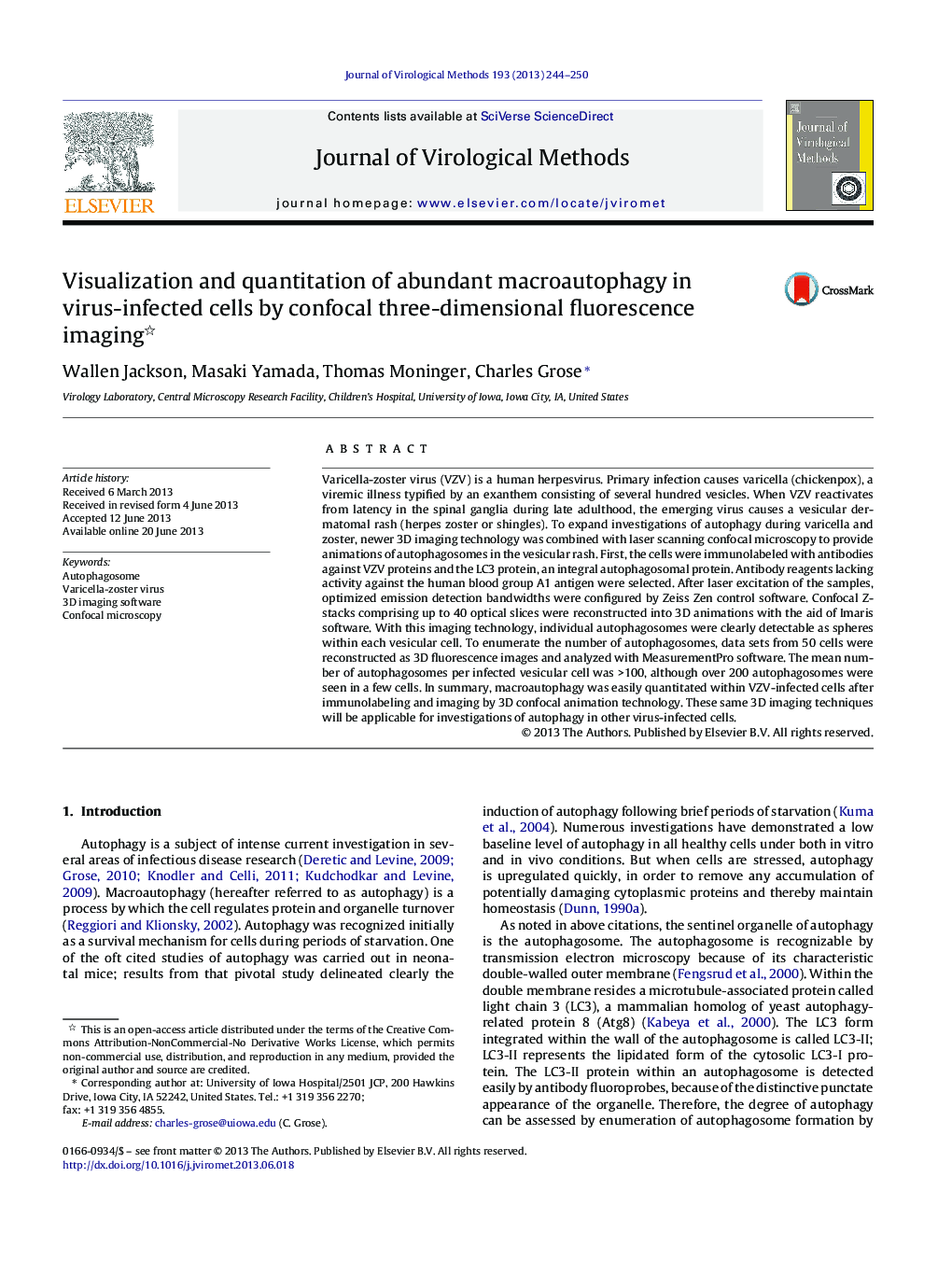| Article ID | Journal | Published Year | Pages | File Type |
|---|---|---|---|---|
| 6134341 | Journal of Virological Methods | 2013 | 7 Pages |
Abstract
Varicella-zoster virus (VZV) is a human herpesvirus. Primary infection causes varicella (chickenpox), a viremic illness typified by an exanthem consisting of several hundred vesicles. When VZV reactivates from latency in the spinal ganglia during late adulthood, the emerging virus causes a vesicular dermatomal rash (herpes zoster or shingles). To expand investigations of autophagy during varicella and zoster, newer 3D imaging technology was combined with laser scanning confocal microscopy to provide animations of autophagosomes in the vesicular rash. First, the cells were immunolabeled with antibodies against VZV proteins and the LC3 protein, an integral autophagosomal protein. Antibody reagents lacking activity against the human blood group A1 antigen were selected. After laser excitation of the samples, optimized emission detection bandwidths were configured by Zeiss Zen control software. Confocal Z-stacks comprising up to 40 optical slices were reconstructed into 3D animations with the aid of Imaris software. With this imaging technology, individual autophagosomes were clearly detectable as spheres within each vesicular cell. To enumerate the number of autophagosomes, data sets from 50 cells were reconstructed as 3D fluorescence images and analyzed with MeasurementPro software. The mean number of autophagosomes per infected vesicular cell was >100, although over 200 autophagosomes were seen in a few cells. In summary, macroautophagy was easily quantitated within VZV-infected cells after immunolabeling and imaging by 3D confocal animation technology. These same 3D imaging techniques will be applicable for investigations of autophagy in other virus-infected cells.
Related Topics
Life Sciences
Immunology and Microbiology
Virology
Authors
Wallen Jackson, Masaki Yamada, Thomas Moninger, Charles Grose,
